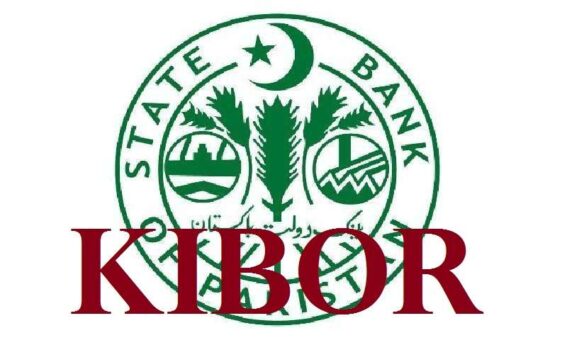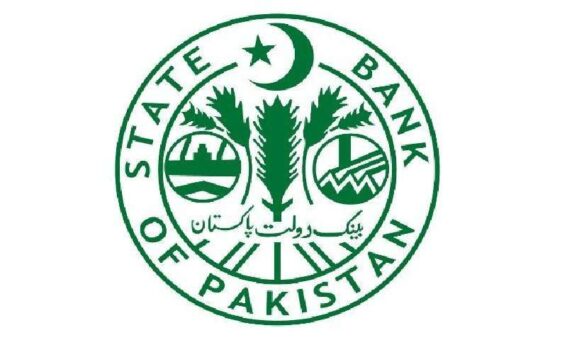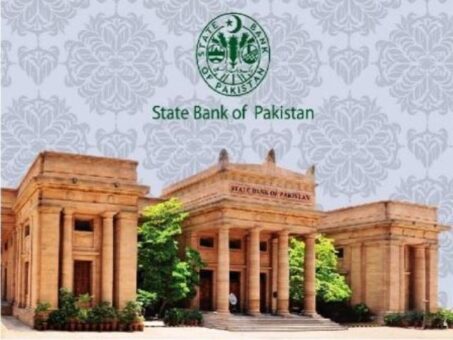KARACHI: The government of Pakistan on Wednesday raised around Rs1.66 trillion through auction of treasury bills for deficit financing and repayment of maturity.
(more…)Tag: SBP
-

Karachi Interbank Offered Rates KIBOR – December 14, 2022
KARACHI: State Bank of Pakistan (SBP) on Wednesday issued the Karachi Interbank Offered Rates (KIBOR) as on December 14, 2022.
(more…) -

Pakistan registers 10pc decline in inflow of foreign remittances
KARACHI: Pakistan has registered around 10 per cent decline in inflows of foreign remittances during first five months (July – November) of current fiscal year.
According to data released by State Bank of Pakistan (SBP) on Wednesday, the inflows of workers remittances declined to $12 billion during first five months of the current fiscal year as compared with $13.29 billion, showing a decrease of 9.7 per cent.
READ MORE: Pakistan remittances decline by 15.7% in October 2022
Experts in financial markets said that overseas Pakistanis were reluctant to send money due to prevailing uncertain exchange rate. Besides, many overseas Pakistanis have option to send their money through informal channels in order to get better exchange rate.
READ MORE: Home remittances decline to $7.68 billion in 1QFY23
The interbank foreign exchange market closed at PKR 224.71 to the dollar on Wednesday December 14, 2022. Whereas, the dollars are not available in the open market and if available the exchange rate has gap of PKR 20 to PKR 30 comparing interbank rates.
READ MORE: Pakistan remittances from Saudi Arabia fall by 7.5% in two months
A sharp decline of 14.23 per cent in inflow of remittances has been recorded in November 2022, when the country received $2.11 billion as compared with $2.46 billion in the same month of the last year.
Similarly, the remittances witnessed a decline of 4.52 per cent on Month on Month (MoM) basis as the country received $2.21 billion in the month of October 2022.
-

State Bank issues foreign exchange rates on December 14, 2022
KARACHI: The State Bank of Pakistan (SBP) has disclosed the foreign exchange rates for December 14, 2022, shedding light on the strength of the Pakistani Rupee (PKR) against various international currencies.
(more…) -

Karachi Interbank Offered Rates KIBOR – December 13, 2022
KARACHI: State Bank of Pakistan (SBP) on Tuesday issued the Karachi Interbank Offered Rates (KIBOR) as on December 13, 2022.
Following are the latest KIBOR rates:
Tenor BID OFFER 1 – Week 15.94 16.44 2 – Week 15.99 16.49 1 – Month 16.06 16.56 3 – Month 16.62 16.87 6 – Month 16.71 16.96 9 – Month 16.74 17.24 1 – Year 16.76 17.26 READ MORE: Karachi Interbank Offered Rates KIBOR – December 12, 2022
-

State Bank issues foreign exchange rates on December 13, 2022
KARACHI: The State Bank of Pakistan (SBP) has unveiled the foreign exchange rates for December 13, 2022, providing valuable insights into the currency dynamics and economic conditions in the country.
(more…) -

State Bank not to accept old design banknotes after Dec 31
KARACHI: State Bank of Pakistan (SBP) on Tuesday said it will not accept old designed large size bank notes after December 31, 2022.
The central bank in a statement said that the federal government through Gazette Notification F.No.2(1)IF-III/2010 dated December 23, 2021, had extended the last date for exchange of old design large size banknotes of Rs 10, 50, 100 & 1000 by one year.
READ MORE: State Bank unveils revision in PM’s youth loan program
The holders of these old design large banknotes have been given the last chance to exchange these old design large size banknotes from the field offices of the SBP Banking Services Corporation (BSC) by December 31, 2022.
It is once again emphasized that this is the last and final deadline for exchange of such banknotes, upon expiry of which, these banknotes shall no longer be exchangeable from the counters of the SBP BSC and thus will lose their value.
READ MORE: SBP tightens transaction data reporting for exchange companies
The general public is therefore, requested to avail this final opportunity and get their holdings of these banknotes exchanged from SBP BSC Field Offices by December 31, 2022 and protect the value of their savings in these banknotes.
-

Karachi Interbank Offered Rates KIBOR – December 12, 2022
KARACHI: State Bank of Pakistan (SBP) on Monday issued the Karachi Interbank Offered Rates (KIBOR) as on December 12, 2022.
Following are the latest KIBOR rates:
Tenor BID OFFER 1 – Week 15.88 16.38 2 – Week 15.93 16.43 1 – Month 16.01 16.51 3 – Month 16.60 16.85 6 – Month 16.69 16.94 9 – Month 16.73 17.23 1 – Year 16.75 17.25 READ MORE: Karachi Interbank Offered Rates KIBOR – December 09, 2022
-

State Bank unveils revision in PM’s youth loan program
KARACHI: State Bank of Pakistan (SBP) Monday issued revision in loan program under Prime Minister (PM) Kamyab Jawan Youth Entrepreneur Scheme (PMKJ-YES).
(more…) -

State Bank issues foreign exchange rates on December 12, 2022
KARACHI: The State Bank of Pakistan (SBP) has disclosed the foreign exchange rates for December 12, 2022, providing a comprehensive overview of the currency market’s performance.
(more…)